US already hit by 7 billion-dollar disasters in 2024 and it's only May
In addition to terrible storms and snow in April, warm temperatures have already made the year the 5th-warmest in the country's 130-year climate history.
Drone video of tornado damage in central Iowa
File: Drone video from Polk County, Iowa on April 27, after a tornado outbreak impacted the Hawkeye State.
The first full month of spring was stormy, warm and snowy according to NOAA's April 2024 climate assessment. That means through April, this year is the fifth-hottest out of the nation's 130-year climate history, and the country has endured seven billion-dollar disasters so far.
The biggest severe weather outbreak so far this year generated more than 100 tornadoes across the Midwest and Plains on April 25-28. On April 26, the NWS Norman, Oklahoma office issued 48 tornado warnings, which was a record for a single day.
Even Alaska saw a tornado on April 19, which was only the fifth for the state since statehood in 1959.
An early April snowstorm dumped up to 2 feet of snow across areas of New York, Vermont, New Hampshire and Maine. Strong winds also knocked out power to hundreds of thousands across the Northeast.
WORST TORNADO OUTBREAK OF 2024 SO FAR LEAVES 5 DEAD ACROSS 2 STATES
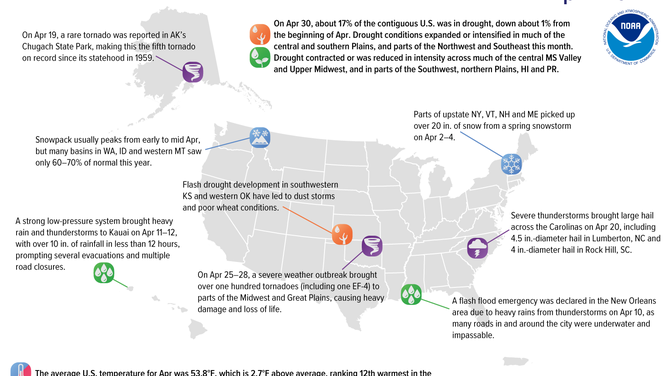
A map of the U.S. plotted with significant climate events that occurred during April 2024.
(NOAA/NCEI / NOAA)
Temperature
NOAA found the average temperature for the contiguous U.S. in April was 53.8 degrees, which was 2.7 degrees above the 20th-century average. That makes 2024 the 12th-warmest April in 130 years of recordkeeping.
Virginia and West Virginia each had their fifth-warmest April on record. Kentucky, Maryland and Ohio had their 10th-warmest April on record.
Alaska was also warmer than average. The state's average temperature was 27.2 degrees, which was 3.9 degrees above average.
The average temp is the high and low averaged for cities across the nation.
NEW SUMMER WEATHER OUTLOOK LOOKS TOASTY ACROSS MUCH OF US AS JUNE LOOMS
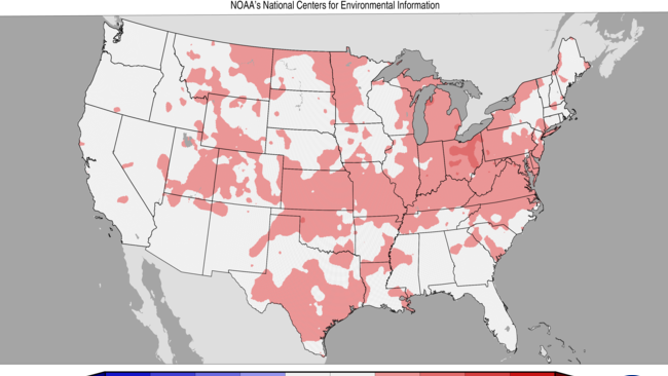
Most of the continental U.S. was warmer than average west of the Rockies.
(NOAA's Center for Environmental Information / NOAA)
From January through April, the average temp was 13.9 degrees, 3.6 degrees warmer than normal across the contiguous U.S. So, 2024 goes down as the fifth-warmest first four months of the year on record.
Parts of the Northeast and Great Lakes saw record warmth. Wisconsin, Michigan, New York, Vermont, New Hampshire and Maine all had their second-warmest January to April.
NEW YORK CITY BREAKS RECORD AS NEARLY 200 MILLION AMERICANS FEEL ABOVE-AVERAGE WARMTH

The cherry blossom peak bloom came early to Washington, D.C.
(National Park Service / FOX Weather)
Precipitation
Across the contiguous U.S., the average precipitation was 2.77 inches, a quarter inch above average. That makes 2024 the 11th-wettest April. Indiana and Pennsylvania had their fifth-wettest April on record. South Dakota had their 10th-wettest April.
The month was in the driest third for Alaska, while the rest of the U.S. was in its wettest third.
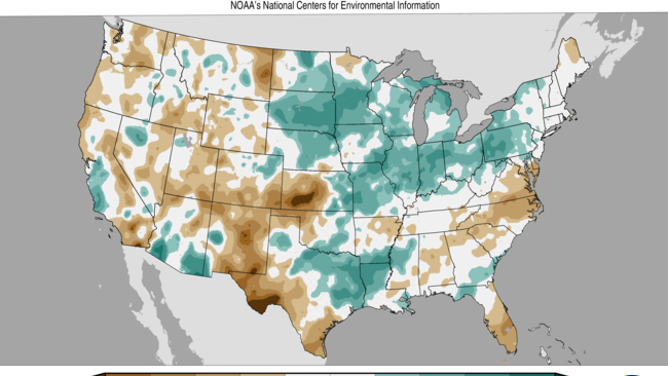
The percent of average precipitation for April. The average period runs 1901-2000.
(NOAA's Center for Environmental Information / NOAA)
New Orleans declared a Flash Flood Emergency on April 10 as severe thunderstorms inundated streets and neighborhoods. Kauai, Hawaii, saw 10 inches of rain in less than 12 hours from April 11-12, triggering evacuations.
Southwest Kansas and west Oklahoma developed flash drought conditions in April that led to dust storms and stressed the wheat crop.
DEADLY SEVERE WEATHER OUTBREAK SLAMS NEW ORLEANS WITH FLASH FLOODING, TORNADOES ACROSS SOUTH
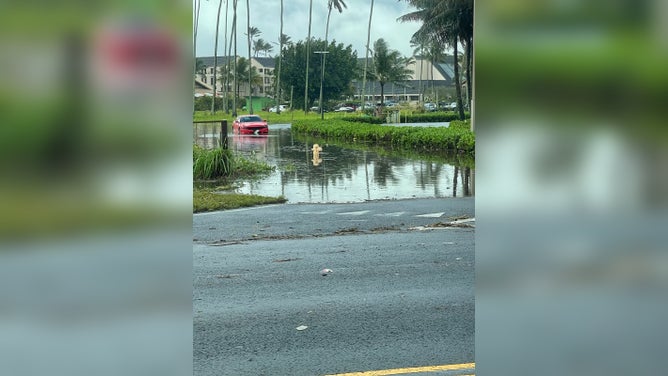
Flash flooding in Kauai, Hawaii on April 12, 2024.
(FOX Weather)
Severe weather
April has been plagued with severe weather and strong storms. The month started with a crippling April snowstorm in the Northeast, but that same storm dropped heavy rain and snow on the Great Lakes on April 2. More than 100,000 people were without power at the height of the storm.
A hailstorm in Rock Hill, South Carolina, caused $5 million in damage on April 20. Softball-sized hail fell in Lumberton, North Carolina.
The Midwest and Plains are still cleaning up after the deadly April 25-28 tornado outbreak. The strongest tornado was an EF-4.
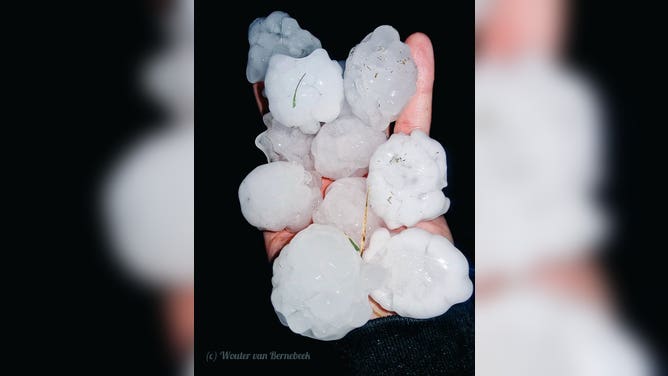
Hail up to 2" in size in Grainfield, Kansas
(@StormchaserNL / FOX Weather)
Billion Dollar Disasters
NOAA is not done calculating losses, but for the year so far, there have been seven confirmed weather and climate disasters with over $1 billion in losses. The latest confirmed event was April 11.
US SEES RECORD NUMBER OF BILLION-DOLLAR WEATHER, CLIMATE DISASTERS IN 2023
The billion-dollar disasters so far this year are:
- A southern tornado outbreak along with an East Coast storm cost $2.7 billion from January 8-10. At least 39 tornadoes ravaged the South from the Florida Panhandle through the Carolinas. The NWS recorded hundreds of damaging high wind reports across the East Coast.
- A winter storm in the Pacific Northwest caused $1.1 billion in damage from January 12-15. Freezing rain and strong winds took a toll on homes, businesses and roads.
- A January 14-18 Arctic blast across central and southern states along with a winter storm caused $1.3 billion in damage. NOAA said that the long-duration cold wave brought freezing rain into the deep South. Wind chills dropped below zero for many states, contributing to fatalities.
- Severe storms in the South caused $1.2 billion of damage from February 10-12. High winds and golf ball-sized hail pounded states from Texas to Florida to North Carolina.
- Severe storms and tornadoes caused $4.4 billion of damage from March 13-15. Kansas, Oklahoma, Missouri, Illinois, Indiana and Ohio were the hardest hit.
- A central states tornado outbreak and eastern states severe weather from April 1-3 caused $1.8 billion in damage. More than 85 tornadoes hit over three days from Oklahoma to West Virginia.
- More severe storms in the South and East caused $1.5 billion in damage on April 8-11. Tornadoes, hail and high wind battered states from Texas across the Gulf Coast to North Carolina and Virginia.
